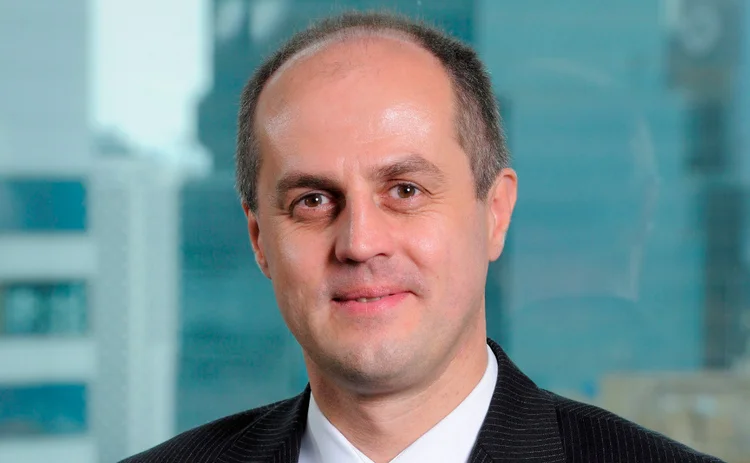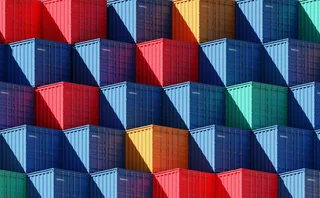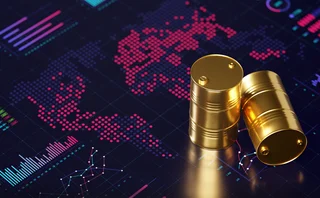
Asia commodity finance house of the year: Societe Generale
SG CIB makes Asia renewables expansion the cornerstone of its commodity finance business

Energy Risk Asia Awards 2016
Spurred by government initiatives to reduce pollution and develop more balanced generation portfolios, Societe Generale Corporate & Investment Banking (SG CIB) has made renewable energy a major focus of its commodity finance activities in Asia-Pacific over the past year.
"Investment in energy infrastructure tends to track GDP, so there is [currently] a lot of demand for energy in countries that are still growing relatively fast," says Daniel Mallo, the bank's Asia-Pacific head of energy, infrastructure and metals and mining finance. He points to Asian countries that are currently experiencing the fastest GDP growth, such as India, which hit 7.9% in the first quarter of the year, and the Philippines, which saw a three-year high of 7% in the following quarter.
As governments in these regions attempt to satisfy growing demand, reducing pollution and creating a more balanced energy mix at the same time, renewable sources have started to play a greater role in domestic power generation portfolios, according to Mallo.
While many Asian countries are rapidly increasing their renewables capacity thanks to greater government support in the face of air pollution concerns, China is currently leading this expansion, taking close to a 40% share of global growth in this market. "We can see a clear acceleration of renewable energy in Asia-Pacific, so it's at the centre of our strategy," Mallo adds.
The bank has been involved in several Chinese renewables projects over the past 12 months, providing a renminbi-denominated structured financing for a hydropower project in China and supporting the acquisition of Australian developer Pacific Hydro by Chinese government-owned State Power Investment Corporation in January 2016.
SG CIB also helped to finance and hedge an Australian wind farm that will play a key role in enabling the Australian Capital Territory (Act) to achieve its target of deriving 100% of its electricity from renewables by 2020. The bank helped to arrange the A$195 million ($144 million) and A$173.5 million debt financings for stage one and two of the Hornsdale Wind Farm Project, which has a 20-year contract to supply the Act's green energy needs. SG CIB also provided a contingent hedge that locked in the project's interest rates for approximately three months to ensure a smooth financial close for the French producer Neoen.
SG CIB uses a variety of methods to mitigate the risks associated with the wide range of commodities projects it finances across Asia. While long-term power purchase agreements can be used to manage commodity price risk for power projects, oil and gas or metals and mining projects typically have more complicated risk management needs.
"We tend to focus on low-cost producers, operators and assets that are strategically positioned in terms of operating costs, ability to access markets and logistics. We work hard to select best-positioned operators and assets in those sectors," Mallo says.
We tend to focus on low-cost producers, operators and assets that are strategically positioned in terms of operating costs, ability to access markets and logistics Daniel Mallo, SG CIB
For example, when the bank worked with Indonesian mining company PT Merdeka Copper Gold to finance construction and development of the $130 million Tujuh Bukit gold mine project in East Java in February 2016, it used a two-fold analysis to mitigate project risk. "The first step involved assessing the cost-competitiveness of the asset: how does it stack up compared with other gold producers in the region?" Mallo says. "And secondly, on a development like that, we typically try to hedge a portion of future production in order to give greater certainty on at least part of the output, so there is a floor on cashflow."
In this case, SG CIB hedged roughly half of the project's future production to provide a buffer against falling gold prices over the next five to six years. The bank was one of the mandated lead arrangers and hedge providers for the project, as well as the documentation agent. The mine, which is projected to produce up to 90,000 ounces of gold and one million ounces of silver per year between 2016 and 2025, forms part of PT Merdeka Copper Gold's plan to become a mid-tier Indonesian mining company through organic growth and acquisitions.
The ability to navigate a range of political, economic and regulatory situations is key to becoming a leading source of commodity finance in the Asia-Pacific region. According to PT Merdeka Copper Gold's chief finance officer, David Fowler, SG CIB's "in-depth experience in understanding and navigating Indonesian laws and regulations was instrumental in achieving our mining project finance".
Only users who have a paid subscription or are part of a corporate subscription are able to print or copy content.
To access these options, along with all other subscription benefits, please contact info@risk.net or view our subscription options here: http://subscriptions.risk.net/subscribe
You are currently unable to print this content. Please contact info@risk.net to find out more.
You are currently unable to copy this content. Please contact info@risk.net to find out more.
Copyright Infopro Digital Limited. All rights reserved.
As outlined in our terms and conditions, https://www.infopro-digital.com/terms-and-conditions/subscriptions/ (point 2.4), printing is limited to a single copy.
If you would like to purchase additional rights please email info@risk.net
Copyright Infopro Digital Limited. All rights reserved.
You may share this content using our article tools. As outlined in our terms and conditions, https://www.infopro-digital.com/terms-and-conditions/subscriptions/ (clause 2.4), an Authorised User may only make one copy of the materials for their own personal use. You must also comply with the restrictions in clause 2.5.
If you would like to purchase additional rights please email info@risk.net
More on Commodities
Energy Risk Asia Awards 2024: The winners
Winning firms adapt to change with exemplary risk management skills
Foreign funds are bulls in China’s onshore commodity futures
Growing participation from overseas investors is boosting liquidity in what’s already a boom market
Energy Risk Software Rankings 2024: IT demands increase amid rising risk
Heightened geopolitical and credit risk increase requirements on commodities software
Energy Risk Asia Awards 2023: The winners
Winning firms demonstrate resilience and robust risk management amid testing times
ION Commodities: addressing the market’s recent pain points
Energy Risk Software Rankings winner’s interview: ION Commodities
Energy Risk Commodity Rankings 2023: adapting to new market dynamics
Winners of the 2023 Commodity Rankings provided reliability when clients faced extreme change
Energy Risk Software Rankings 2023: managing uncertainty
Unpredictable markets make CTRM software choices key
Navigating the volatility and complexity of commodity markets
Commodity markets have experienced significant challenges since the Covid-19 pandemic, the conflict in Ukraine and the subsequent sanctions imposed on Russia. These unprecedented events have caused fluctuations in supply and demand, disrupted global…








